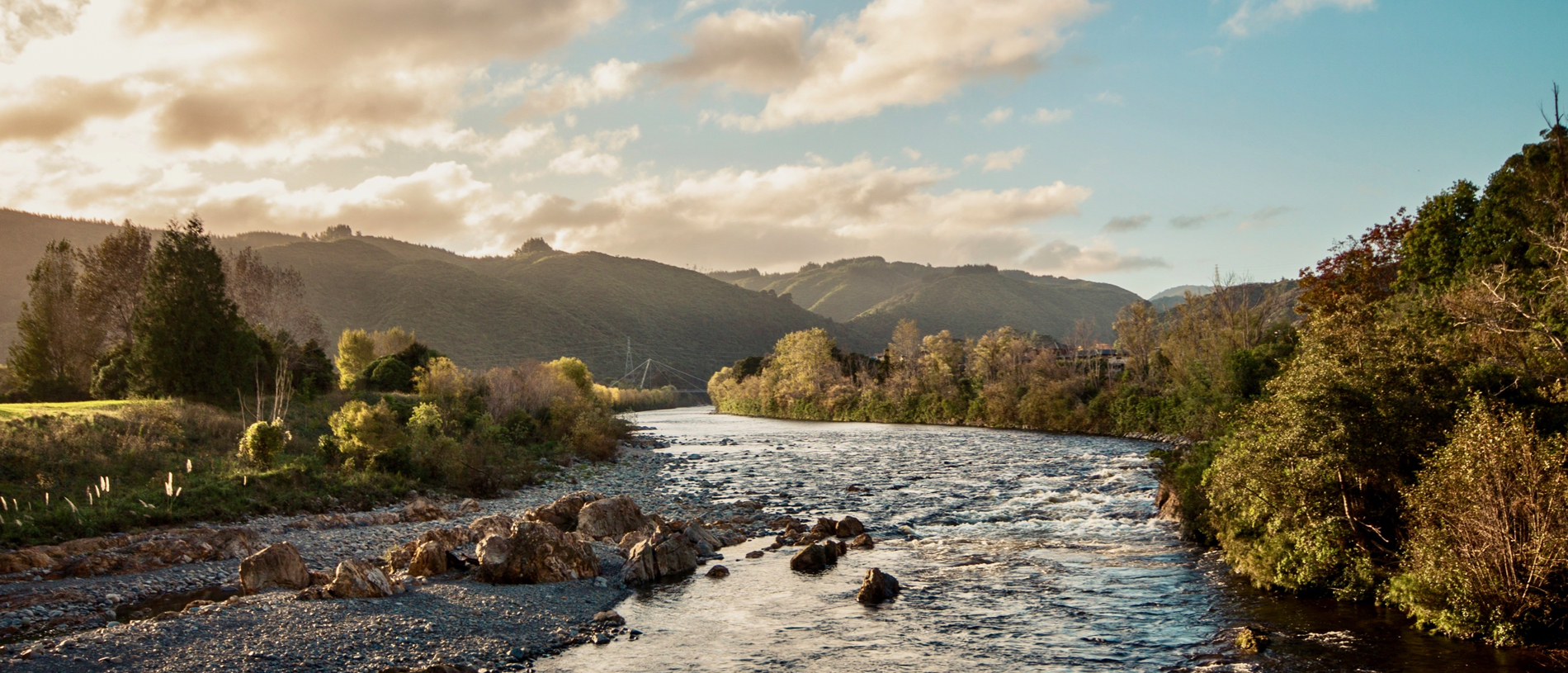
Up the creek: Upper Hutt
The main feature of the district, of course, is the river. Not only does it look good, but the quality of the water is excellent, too.
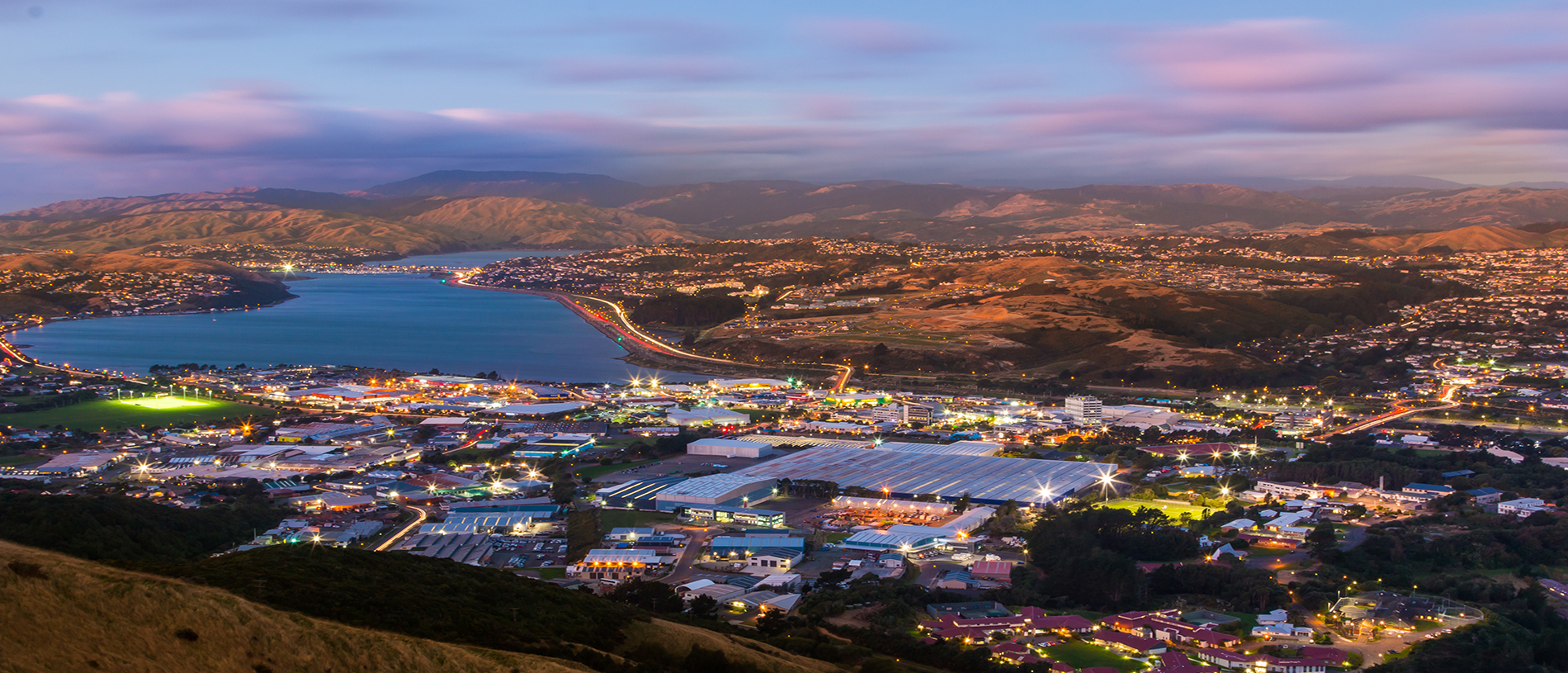
Everyone had plans for Porirua.
First, it was meant to be a tribal fishing and shellfish-gathering ground, then a farming district, comprising smallholdings belonging to Lambton Quay farmers. And while some had no higher ambitions for it than to be a fishing village servicing north-south travellers, some supposed it would simply become a kind of outlying dormitory town for Wellington city. At the other end of the scale, there were those who reckoned it would become a local-scale Detroit, while the government obviously decided it would be a great place to establish an asylum...
But the best-laid plans of man and men and all that: war, economics, even Mormonism, made Porirua different and something no one had quite counted on.
These days, the town sprawls from Tawa in the south, all the way around its magnificent harbour, incorporating the coast from Tītahi Bay north to Pukerua Bay, before extending all the way back into the hills that divide the west coast from Hutt Valley.
Porirua is a blend of old (but not that old, as one of its many reinventions has seen it practically rebuilt from the 1940s) and the new: bespoke suburbs have been added periodically over the last 50 years, from Whitby in the 1970s to brand-spanking-new Aotea more recently.
This is an ethnic, cultural and economic melting pot: New Zealand, that is, in microcosm.
It’s known as P-Town, these days – any apparent connection to the abuse of the class-A drug is purely coincidental – but it was known to pre-European Māori as Pari-rua, which refers to the tidal influx within the two arms of the harbour. The present-day name Porirua is a corruption.
The shallow waters of the harbour were rich in kaimoana, as the name of the northern arm, Pāuatahanui (‘big shellfish’) suggests. Hence it was prized by its original inhabitants.
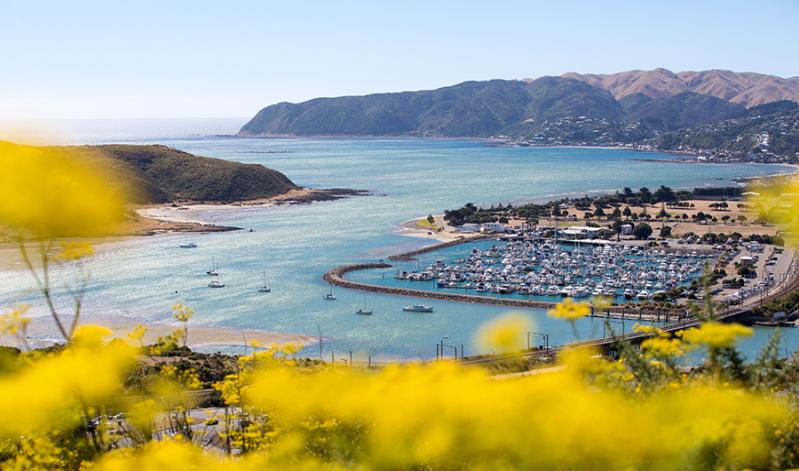
It changed hands a few times, but when Europeans began eyeing it up for settlement, it belonged to Ngāti Toa, who were mostly centred on a fortified pā at Paremata. The first visitor to the district, though, was the legendary Polynesian explorer, Kupe, who sailed his great canoe, the Matahorua, into the harbour. His anchor stone, Te Punga o Matahorua, used to be on display in Porirua but has since shifted to Te Papa Tongarewa.
The first European settler in the area was sealer, whaler and trader Joseph Thoms, who married the daughter of a Ngāti Toa tohunga (priest) and operated a shore whaling station from his base roughly where Ngāti Toa Domain is now, rowing out to harpoon migratory whales that navigated Cook Strait and the Kāpiti Coast.
Thoms was plainly the entrepreneurial type, too, and before the road around the head of the inlet was built in the late 1840s, a ferry from Paremata across to what was Whitireia Peninsula was the only way north from Wellington by land on the west coast. Thoms built a pub to keep those waiting for the ferry or stranded by the weather entertained: he was locally famous for his home-distilled moonshine, known as ‘chain lightning’.
The New Zealand Company had settled a few shiploads of British further south in Wellington on the promise that their one-acre ‘town’ plot of land would be twinned with a 100-acre ‘country’ plot.
Wellington itself was short of the thousands of acres of mellow, arable land necessary, so the resourceful company agents began hunting north of the city and across the strait in the top of the South Island.
In both directions, they encountered resistance from the same iwi, the decidedly truculent Ngāti Toa. Matters came to a head at the Wairau River in present-day Marlborough and a handful of Europeans and Te Rongo, the wife of chief Te Rangihaeata, Ngāti Toa rangatira, were killed in the ensuing Wairau Affray in 1843.
For everyone who was busy trying to settle their block at the head of the Pāuatahanui Inlet, this was very bad news: the sale and purchase of their land was still under dispute by its original owner and that owner was Te Rangihaeata. His mood after events across the strait could not be described as conciliatory.
Eventually, in 1846, the British Army drove Te Rangihaeata out of a fortified position he had constructed in the Horokiri Valley – the site of the siege is commemorated by the rather lovely and very peaceful Battle Hill Farm Forest Park – and the inexorable tide of European settlement flowed once more.
The government, anxious to prevent any retaliatory raid from the north and also to prevent Te Rangihaeata from escaping to sea, ordered the building of a fortified barracks at Paremata. However, construction delays meant Fort Elliott wasn’t finished until 1847 and promptly fell down the following year in the powerful earthquake of 1848. But no matter: Te Rangihaeata had gone north and with peace reigning, everyone was already happily cutting down the bush around Porirua for their farms and homesteads. The remains of the barracks can still be seen.
The settlement of Porirua proceeded along conventional lines for most of the remainder of its history. That is, to say, it followed transport. With the road that the British Army built running around the head of the harbour and over Paekākāriki Hill, settlement initially began at the head of Pāuatahanui Inlet. But with a rail bridge constructed over the harbour from Paremata to Mana, the action shifted back and the name was changed from The Ferry to Porirua.
A road bridge spanning the gap followed rail in 1936 and the Porirua district began to thrive as a fishing settlement and seaside destination for Wellington day-trippers. The large number of boat sheds surrounding the harbour are a legacy from those days.
After its unsettled beginnings, the most striking feature of Porirua’s history is how deliberate much of it was. Apart from the military encampment at Paremata, the first government-planned settlement was the establishment in 1887 of the Māori village of Takapuwahia on the south-western side of the harbour, which was intended to draw Māori from the surrounding area.
It was successful in this, in that Takapuwahia became the principal marae for Ngāti Toa and, indeed, remains so today. It can be hard to find because it is surrounded by suburbia, but the marae still stands proudly there, although the original wharenui (meeting house) that had stood since 1901 was replaced with a beautifully carved, modern example in 1992. Takapuwahia’s other claim to fame is that it was the site of the first Mormon mission to New Zealand, and is thus the home of Kiwi Mormonism.
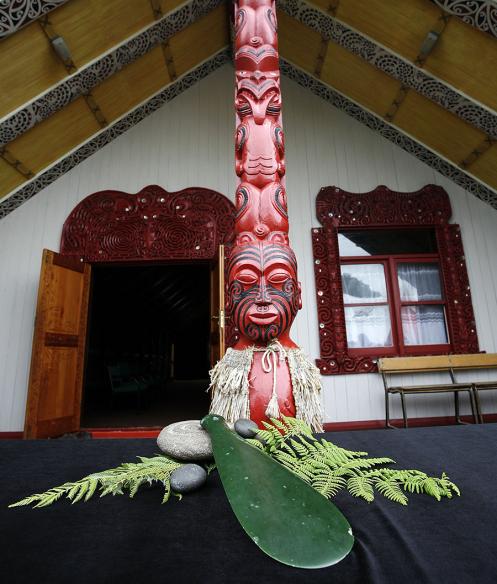
At the same time, Takapuwahia came into being, the government also opened the Porirua Lunatic Asylum (as it was indelicately named) in 1887. This, for a time, was the township’s largest industry, with 2000 staff and patients there at the turn of the nineteenth and twentieth centuries.
In the 1940s, the government was considering several plans to establish ‘satellite’ cities to ease land pressure on metropolitan Wellington. In 1947, plans were being hatched to replace the little village of Porirua with a shopping centre that would service a major residential housing development was approved, but a decade passed before the old village was bulldozed, a portion of the headwaters of the harbour reclaimed and the pesky Kenepuru Stream, which was forever breaking its banks and flooding the old township, was diverted and straightened.
Once begun, work proceeded swiftly. The shopping centre was built, and then housing was thrown up all over the place, from as far south as Tawa Flat (as it had been known after the farm belonging to an original European settler), to Pukerua Bay.
In the 1970s, with the growth of New Zealand’s manufacturing sector, all sorts of industries began establishing factories in the area. The photography giant, Kodak, was one company that was quick to see the labour resource that all those new Porirua residents presented, as was American chemical company, W. R. Grace; the locksmith Chubb moved in, as did Ashley Wallpaper (wallpaper was big in the 1970s) and the vast Todd Motors factory (Todds had traditionally assembled cars for the British company, Rootes Group, as well as Australian Chrysler, but had lately won the contract to assemble for Mitsubishi of Japan) shifted over from Lower Hutt.
The new Todd’s plant was built on a hill belonging to the Porirua Psychiatric Hospital (as it was now rather more delicately named) – or rather, the hill was removed and dumped into the harbour to become more Porirua dry land.
A promotional film produced by the government for the new residential developments in Porirua in the 1950s promised that they would provide new housing for ‘the Smiths, the Scotts, the McHales and the Fowlers’, but that’s not really how it worked out in the long run. The presence of all that heavy industry meant that in the 1970s, Porirua attracted unskilled and semi-skilled workers, mostly Māori but also a significant number from the Pacific Islands.
The population of Porirua – and much of its character – is a legacy of this era of settlement.
Of the 55,000 people who call Porirua home, around a fifth are Māori and over a quarter are Pasifika. A great way to experience the cultural diversity of Porirua is by visiting the Porirua Market, which is held every Saturday in the Waitangirua Carpark.
As you’d expect in a place with such a rich history, Porirua has a lot to brag about, culturally speaking.
The jewel in its crown – indeed, a significant jewel in the crown of the Wellington region – is Pātaka museum, which showcases Māori art and heritage, and which features regular, superb exhibitions of both.
There are also excellent and absorbing museums at the New Zealand Police College, and at Porirua Hospital (as it is now very delicately known).
Around what was once the waterfront of Porirua before the major reclamations happened, there are 10 stainless steel sphere, inscribed with quotes from early eyewitnesses. These are known as the Parumoana Spheres, and a tour of these offers an intriguing way of engaging with the past.
The boathouses fringing the harbour attest to the fact that Porirua has always been an aquatic playground. Mana is a very popular place to launch, retrieve and store boats, and the harbour is an excellent place to learn about boats and their ways.
The sheltered harbour and lagoon are also a mecca for windsurfers, jet- and water-skiers and kayakers, and it’s from Mana that you’ll catch a boat if you’re heading out to Kāpiti or Mana Islands.
Mana Island, just a little to the south of the harbour entrance, is a ‘scientific reserve’. Visitors are welcome during daylight hours, but check your pockets for stowaway mice!
Porirua is fringed by some of the Greater Wellington region’s best beaches: Paremata Beach, Plimmerton, Pukerua and Tītahi Bays are all readily accessible, excellent swimming beaches; Onehunga Bay, reached by walking or biking around the track skirting Whitireia Peninsula, is a cracker, too, and a great picnic spot. Tītahi Bay receives a good surfing wave in the right conditions: on its day, it, like, goes off.
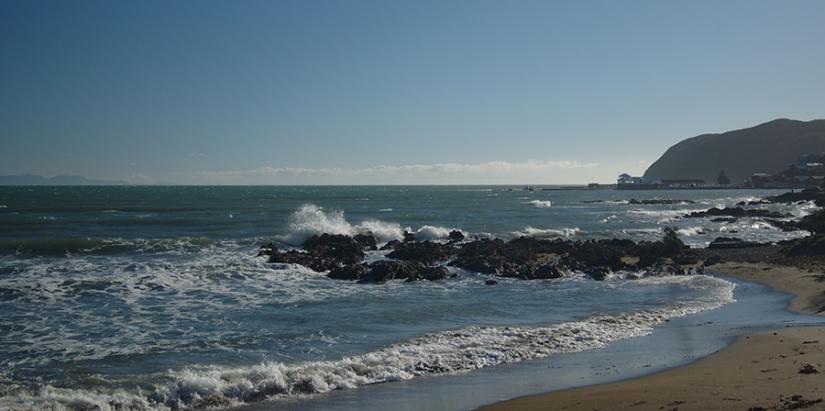
There are lots of opportunities for walking and biking in and around Porirua, too. The aforementioned Whitireia Peninsula track is excellent, as are the tracks in Spicers Forest west of Tawa and Battle Hill Farm Forest Park. One of the best family days out in the Wellington region is a rambling bike ride around Aotea Lagoon, with a picnic along the way.
For those who prefer it less sedate, a block of pine forest has been rigged with an ‘aerial obstacle course’ called Adrenalin Forest.
On the other extreme, if you don’t fancy getting out of your car, then a drive around the harbour is good for the soul. At the head of it, you could extend the excursion by taking the Haywards Hill road to Judgeford. There’s a house removal company storage yard up there: wandering around a used house lot is a fascinating way of spending a couple of hours.
Like Mormonism, McDonald's started out in New Zealand in Porirua: the first Golden Arches was opened at Cobham Court in Central Porirua in 1976 when you could get a Big Mac for 75¢. Things have changed. That McDonald's has closed (others have opened), and there is plenty of competition in the fast food sector, but there is a big variety of ethnic restaurants these days, too.
Quality cafés abound: you can have high tea in the gracious old Gear Homestead (the Gear family operated Wellington’s biggest abattoir, and you can see for yourself from their lovely mansion how well they did for themselves) at Papakōwhai, or brunch at Groundup at the head of the Pāuatahanui Inlet as you steel yourself to tackle Paekākāriki Hill.
The Sandbar is a popular family bar and restaurant in Plimmerton, and for a dose of bona fide decadence, you can’t go past the cake creations at Made by Marie in Pukerua Bay.